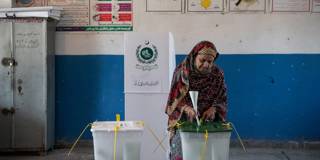This month’s general election dealt a historic blow to the Pakistani military, with candidates backed by imprisoned former Prime Minister Imran Khan winning more seats than any other political bloc. But the regime will likely respond by cracking down on Khan’s supporters, setting the stage for more political turmoil.
OXFORD – Pakistan’s general election on February 8, marred by allegations of widespread voting irregularities, resulted in a hung parliament and the formation of a coalition government consisting of the country’s two major dynastic parties. Nevertheless, the outcome represents a stunning defeat for the country’s powerful military, as candidates backed by the imprisoned former Prime Minister Imran Khan’s Tehreek-e-Insaf Party (PTI) secured more parliamentary seats than any other political bloc despite a two-year crackdown on its voters and supporters.

OXFORD – Pakistan’s general election on February 8, marred by allegations of widespread voting irregularities, resulted in a hung parliament and the formation of a coalition government consisting of the country’s two major dynastic parties. Nevertheless, the outcome represents a stunning defeat for the country’s powerful military, as candidates backed by the imprisoned former Prime Minister Imran Khan’s Tehreek-e-Insaf Party (PTI) secured more parliamentary seats than any other political bloc despite a two-year crackdown on its voters and supporters.